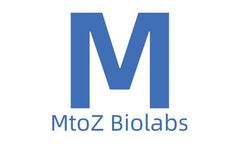Hormone Response Articles & Analysis
7 articles found
These cells provide a consistent and reproducible model for studying various aspects of ovarian biology, including cellular differentiation, hormonal responses, and the mechanisms underlying tumor formation. Researchers can manipulate these cells genetically, test drug responses, and explore the effects of various environmental factors on ovarian ...
They play an important role in many biological processes such as signal transduction, cell communication, immune response, hormone secretion, and so on. These proteins are usually synthesized in the endoplasmic reticulum (ER) of the cell and then transported out of the cell through a series of biosynthesis and transport processes. ...
Customer tailoring of our immortalized cell lines means that cell lines can be established from tissues or donors that are specified by our customers, as well as that specific element (e.g. hormone responsive promoter constructs for analysis of biologicals, biosimilars or biobetters, or traceable fluorescent proteins, etc), are stable introduced or knock-out ...
The main types of glucose clamp are as follows: Hyperinsulinemic (Euglycemic) Clamp The classic glucose clamp A continuous infusion of insulin is administered to raise and maintain plasma insulin concentration to 100 µU/ml Peripheral glucose uptake is stimulated and hepatic glucose production is surpressed The glucose infusion rate is then equal to glucose uptake, achieving a steady ...
For this purpose, we exposed zebrafish embryos to 5, 50 or 500 µg/L TPP for 120 d, and measured hormonal and transcriptional responses along the hypothalamus‐pituitary‐gonad (HPG), ‐interrenal (HPI), and ‐thyroid (HPT) axes. ...
Here, we examined circulating thyroid hormones, thyroid gland function of nestling American kestrels (Falco sparverius) at 17‐20 d of age, following embryonic exposure by maternal transfer only to environmentally relevant levels of PBDEs (DE‐71 technical mixture). ...
Twelve years of research with 8–14 universities in Japan produced fruitful results on radiation hormesis. Hormone response tests on rabbits, enzyme response tests on rats and mice, p53 gene responses from mice and rats and helper-T responses from human patients gave us impressive information to consider the ...





